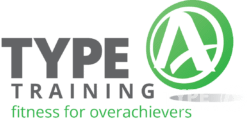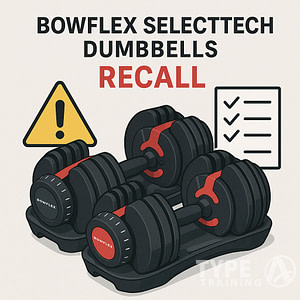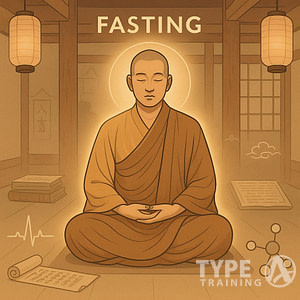It is crucial to recognize that workout strategies for women need to change according to their body’s needs throughout different life stages. Staying active and maintaining a fitness routine catered to your current life stage can have a significant impact on your overall health and well-being. By focusing on exercises and fitness strategies tailored to your age, hormonal balance, and physical abilities, you can prevent various health conditions, maintain strength, endurance, balance, and stability, and enjoy an improved quality of life.
Incorporating physical activity into your daily routine is essential for all women, regardless of age, shape, or ability. All women should get at least 2 hours and 30 minutes each week of moderate-intensity aerobic physical activity. Additionally, muscle-strengthening activities should be performed on at least two days each week, and balance exercises are especially important for older women at a higher risk of falls. Customizing your workout routine to suit your current life stage can be beneficial in achieving optimal health outcomes.
Key Takeaways
- Tailoring your fitness routine to your life stage helps maintain strength, endurance, balance, and stability while preventing health conditions.
- Incorporating aerobic, muscle-strengthening, and balance exercises are essential elements for a well-rounded fitness regimen for women.
- Adapting your workout plan to changing hormonal and physical needs can optimize overall health and well-being throughout your life stages.
The Impact of Life Stages on Women’s Fitness
As a woman, your fitness journey will be influenced by various life stages, which have unique challenges and opportunities. In this section, we will focus on hormonal changes, physical changes, life events, and health challenges.
Popular posts:
Hormonal Changes
Throughout your life, you will experience fluctuations in hormonal levels, especially estrogen and progesterone, which can impact your workouts and energy levels. During puberty, menstruation, and menopause, hormonal imbalances can lead to mood swings or fatigue, making it essential to tailor your fitness routine accordingly. For instance, adapting your exercise routine to the four phases of your menstrual cycle can help optimize performance and support hormonal balance.
Physical Changes
As you age, your body undergoes various physical changes like reductions in muscle mass, bone density, and metabolic rate. Engaging in weight-bearing exercises and resistance training can help counteract these changes and maintain strength and balance. For example, working on balance-based activities can minimize the risk of falls, while strength training preserves muscle mass and bone health.
Life Events
Major life events like pregnancy can significantly impact your fitness routine. During pregnancy, it’s essential to modify your workouts to accommodate the physical changes and energy requirements your body experiences. Consult with a healthcare professional or certified fitness trainer for guidance on safely adjusting your fitness routine. The American College of Obstetricians and Gynecologists recommends at least 150 minutes of moderate-intensity aerobic exercise per week during pregnancy, with appropriate modifications.
Health Challenges
Throughout your life, you may face health challenges such as cardiovascular disease, stroke, diabetes, and certain cancers. Regular exercise, combined with a balanced diet and regular health checkups, can help mitigate these risks. Prioritizing your health at each life stage will make a significant difference in maintaining fitness and well-being in the long term. The World Health Organization emphasizes the importance of addressing women’s and girls’ health needs at all stages to optimize overall well-being.
Remember to be patient with yourself as you navigate the different life stages and adjust your fitness routine accordingly. Stay confident, knowledgeable, and committed to your health and well-being throughout your journey.
Workout Strategies for Women for Different Life Stages
Maintaining a consistent workout routine is essential for women in all stages of life. Staying active can help prevent health conditions, maintain strength, endurance, balance, and stability. Different life stages require different approaches to exercise, so let’s explore some fitness strategies for each stage.
Young Adult (18-30)
During this stage, women often have higher energy levels and can take advantage of more intense workouts. Focus on incorporating a mix of cardiovascular exercise, strength training, and flexibility exercises. Aim for at least 150 minutes of moderate aerobic activity or 75 minutes of vigorous aerobic activity per week, combined with strength training exercises two days per week. Some sample workouts for young adults include:
- Cardio: Running, Jumping rope, Dancing, Swimming
- Strength Training: Squats, Lunges, Push-ups, Planks
- Flexibility: Yoga, Pilates, Stretching
Investing in bone health is crucial during this stage as well. Include weight-bearing exercises and ensuring adequate calcium and vitamin D intake can help maintain strong bones. Consult your doctor to determine the proper supplementation if necessary.
Adult (31-50)
As you transition into adulthood, you might notice changes in your body and energy levels. It’s essential to maintain a well-rounded exercise routine that considers any physical limitations or health conditions. The American Heart Association still recommends aiming for at least 150 minutes of moderate aerobic activity per week and strength training exercises two days per week. Some sample workouts for adults include:
- Cardio: Brisk walking, Cycling, Swimming, Elliptical training
- Strength Training: Resistance band exercises, Weightlifting, Bodyweight exercises
- Balance and Stability: Yoga, Tai Chi, Single-leg balance exercises
Ensuring proper nutrition and continuing to focus on bone health is still important during this stage. Regular exercise can also help manage weight and reduce the risk of chronic health conditions.
Older Adult (51 and Beyond)
In the older adult stage, maintaining strength, balance, and stability becomes a priority. Older adults should continue to engage in aerobic activity and strength training, while also incorporating balance exercises to prevent falls and improve overall mobility. The National Institute on Aging provides these sample workouts:
- Cardio: Walking, Water aerobics, Dancing, Cycling
- Strength Training: Seated exercises, Wall push-ups, Chair squats
- Balance and Stability: Toe stands, Heel-to-toe walk, Balance walk
Always consult with your healthcare provider before embarking on a new exercise routine, especially if you have any pre-existing conditions or concerns.
Take advantage of the various exercises and activities available throughout each life stage to maximize your health and fitness. Remember, staying active and maintaining a consistent workout routine can make a significant difference in your overall well-being.
Types of Exercises to Employ
Maintaining strength, endurance, balance, and stability throughout different life stages is crucial for women. Incorporating a variety of exercises in your routine can help prevent health conditions and improve overall well-being. Here are some exercise categories you should consider including in your fitness strategy:
Aerobic Exercise
Aerobic exercises, also known as cardio, are essential to maintaining a healthy heart and lungs. Activities such as walking, running, and dancing can help strengthen your cardiovascular system. Additionally, these exercises can help reduce the risk of developing cardiovascular diseases.
Typical aerobic exercises to include in your routine:
- Walking
- Running
- Dancing
- Swimming
Strength Training
Strength training helps build and maintain muscle mass, which is vital for healthy bones and overall body function. Exercises like squats, lunges, pushups, and planks target different muscle groups, leading to improved physical ability. Using dumbbells can also enhance your strength workout.
Key strength training exercises:
- Squats
- Lunges
- Pushups
- Planks
Balance and Flexibility
Balance and flexibility exercises are essential for preventing injuries and maintaining joint health. Activities like yoga, Pilates, and meditation can help increase flexibility and improve your overall balance. These workouts are particularly beneficial for women as they age or navigate through life stage changes.
Balance and flexibility exercises to try:
- Yoga
- Pilates
- Tai Chi
HIIT and Circuit Training
High-Intensity Interval Training (HIIT) and circuit training are efficient ways to combine cardio and strength exercises. These workout regimes involve alternating between periods of intense physical activity and rest, providing substantial benefits in a shorter time frame. HIIT and circuit training can be tailored to your fitness level, making them great options for women at any life stage.
Try incorporating these exercise categories into your fitness routine to achieve well-rounded results. Make sure to consult your doctor before starting any new exercise regime, and consider working with a fitness professional to ensure proper technique. By maintaining a diverse workout routine centered around aerobic exercise, strength training, balance and flexibility, and HIIT or circuit training, you can create a solid foundation for a healthy and active life.
Importance of Physical Activity for Women
Physical activity is crucial for women at every stage of their lives. Regular exercise offers a variety of benefits, including preventing chronic diseases, managing weight, promoting mental health, and improving overall quality of life. In this section, we will discuss these benefits in detail.
Chronic Disease Prevention
Engaging in regular exercise can help prevent several chronic diseases and health conditions. For instance, the Centers for Disease Control and Prevention states that regular physical activity can reduce the risk of heart disease, stroke, high
To incorporate aerobic activity into your routine, try brisk walking, swimming, or cycling for at least 30 minutes per day, five days a week.
Weight Management
Maintaining a healthy weight is important for overall health, and regular exercise is a key factor in achieving and maintaining a healthy weight. When combined with a balanced diet, physical activity can prevent weight gain, promote weight loss, and reduce the risk of obesity-related health issues.
High-intensity interval training (HIIT) can be particularly effective for weight management. These workouts involve alternating between short periods of intense exercise and recovery periods, allowing you to burn more calories in less time.
Mental Health Benefits
Physical activity has been proven to have a positive impact on mental health. According to the National Institute on Aging, regular exercise can help reduce symptoms of anxiety and depression, improve mood, and boost energy levels.
Exercises such as yoga and Pilates can also help strengthen the connection between your mind and body, leading to increased mental clarity and focus.
Improved Quality of Life
Incorporating regular exercise into your daily routine can significantly improve your overall quality of life. The Office on Women’s Health emphasizes the importance of maintaining strength, endurance, balance, and stability as you age.
For older adults, engaging in strength training and balance exercises can reduce the risk of falls and improve mobility, allowing for greater independence. Furthermore, regular physical activity can help manage chronic pain, reduce fatigue, and promote better sleep.
Remember, it’s important to consult with your healthcare provider before starting a new exercise routine, especially if you have any pre-existing health conditions or concerns. By working within your capabilities and listening to your body, you can safely experience the numerous benefits of exercise throughout all stages of your life.
Recommendations and Precautions
When it comes to workout and fitness strategies for women in different life stages, it’s essential to consider various factors like preventing health conditions, maintaining strength, endurance, balance, stability, and more. Below are some key recommendations and precautions to follow throughout your fitness journey.
Consulting a Doctor
Before starting any new fitness routine, it’s crucial to consult your doctor to ensure the chosen exercises are appropriate for your specific stage of life, abilities, and health conditions. This is particularly important if you have chronic conditions, such as arthritis or osteoporosis. Your doctor can help you determine the type and intensity of exercises that would benefit your overall health, fitness goals, and ensure your safety.
Knowing Your Limits
Understand and respect your body’s limitations. As you age, you may need to modify your workouts or opt for low-impact exercises, like yoga or swimming. The American Heart Association suggests adults engage in moderate-intensity aerobic activity, like brisk walking, 150 minutes per week. Listen to your body. Stop exercising if you experience pain, and gradually progress in intensity over time.
Ensuring Proper Technique
Using proper technique when exercising is vital to avoid injury and maximize the benefits. Learn the correct form for each exercise, especially when lifting weights or performing moves that involve multiple muscle groups. Seek guidance from a professional or watch instructional videos to ensure you’re doing the exercises correctly. Focus on your breathing and maintain a steady pace, especially during strength training exercises.
Recovery and Sleep
Remember that your body needs adequate recovery time between workouts, especially as you age. Recovery allows your muscles to repair and grow stronger, and aids in preventing injuries. Sleep is vital in proper recovery. Aim for 7-9 hours of quality sleep each night to promote optimal physical and mental health.
Integrating proper techniques, listening to your body, seeking professional advice, and ensuring sufficient recovery time will help you stay active and maintain your fitness throughout different life stages, ultimately improving your quality of life.
Staying Motivated and Supported
Setting Realistic Goals
To stay motivated in your fitness journey, it’s crucial to set realistic goals. Focus on achieving small, attainable objectives that will gradually improve your overall health and fitness level. For example, aim for a minimum of 150 minutes of moderate aerobic activity or 75 minutes of vigorous aerobic activity per week, along with strength training exercises at least twice a week. This approach will help you build endurance, lean muscle mass, and promote mental health. Remember, consistency is key, and progressing gradually will make you feel more energetic and less likely to experience pain or injury.
Joining Support Groups
Surrounding yourself with like-minded individuals can be a game-changer when aiming for a healthier lifestyle. Consider joining support groups, workout classes, or online fitness communities that focus on women’s health and fitness. Sharing your experiences, challenges, and accomplishments with others will not only provide a sense of camaraderie but also reinforce your motivation and commitment to staying active. Additionally, support groups often share helpful tips, advice, and resources tailored to women dealing with various life stages, including how to exercise effectively during your period, and how to handle workout pains.
Incorporating Fun Activities
To keep your workout routine enjoyable and engaging, make sure to incorporate fun activities into your regimen. Don’t be afraid to explore new forms of exercise, such as swimming, dancing, or yoga, which will provide a refreshing break from traditional strength training and cardio routines. As you try out different activities, focus on finding exercises that make you feel excited and energetic, as these will be more sustainable and enjoyable in the long run. Remember, the key to maintaining a healthy lifestyle is finding activities that you genuinely love and look forward to doing.
In order to ensure you are following the right exercise steps and techniques, consult reputable sources such as .edu, .org, and .gov websites. These platforms offer evidence-based guidance and expert recommendations for women at different life stages, ensuring the effectiveness and safety of your workout plans. Stay consistent, motivated, and open to new experiences; your dedication to maintaining fitness will greatly benefit your physical and mental wellbeing.
Frequently Asked Questions
What are the best workouts for women at different life stages?
For women in their 20s and 30s, it is recommended to focus on cardiovascular exercises, strength training, and flexibility. This can include running, swimming, weightlifting, and yoga. When entering the 40s and 50s, it is essential to continue with cardiovascular exercises with more emphasis on low-impact workouts like walking, swimming, and cycling. During menopause and beyond, it is essential to maintain activities that promote flexibility, balance, and strength, like gentle yoga, Pilates, and resistance training.
How can exercise help prevent health conditions in women?
Regular exercise can help prevent various health conditions, including heart disease, stroke, type 2 diabetes, and certain types of cancer. Mayo Clinic states that exercise can also help manage chronic issues like depression, anxiety, and arthritis.
How can strength and endurance exercises benefit women’s health?
Strength training helps build and maintain muscle mass, which is crucial for maintaining a healthy metabolism and skeletal structure. Endurance exercises like swimming, running, and cycling improve cardiovascular health and help lower the risk of heart disease and other chronic conditions. A study from Harvard University suggests that both strength and endurance exercises provide numerous health benefits, such as lowering the risk of early death and disease.
What role does balance and stability play in a woman’s overall fitness?
Good balance and stability help prevent falls and injuries and maintain overall functional fitness. As women age, balance and stability can decline, increasing the risk of injury. The Office on Women’s Health recommends incorporating balance and stability exercises, like yoga and tai chi, into a regular fitness routine.
How do fitness strategies change as women age?
As women age, their hormone levels and body composition change. This may lead to a decrease in muscle mass, flexibility, and bone density. Adapting fitness routines to address these changes is crucial. Most experts suggest focusing on strength training, low-impact cardiovascular exercises, and balance and stability exercises for an optimal workout routine.
What are the key components of a well-rounded workout routine for women?
A well-rounded workout routine for women should include cardiovascular exercises, strength training, flexibility exercises, and balance and stability exercises. Mixing these components can help women maintain overall health and fitness throughout their lives. Regular exercise can improve mood, boost energy levels, and promote better sleep, according to Mayo Clinic.











